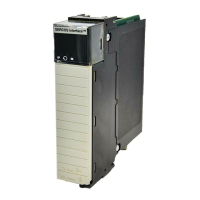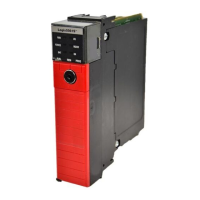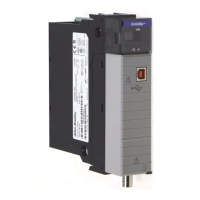Geometries with orientation support
Rockwell Automation Publication MOTION-UM002F-EN-P - February 2018 165
The same applies to the J6 axis. One revolution of the J6 axis should equal
360
.
5. Move all joints to the calibration position by jogging the robot under
programmed control or manually moving the robot when the joint axes are
in an open loop state.
6. Do one of the following:
a. Use the Motion Redefine Position (MRP) instruction to set the
positions of the joint axes to the calibration values obtained in step 1.
b. Set the configuration value for the joint axes home position to the
calibration values obtained in step 1 and execute a Motion Axis Home
(MAH) instruction for each joint axis.
7. Move each J1, J2, J3 joint to an absolute position of 0.0. Verify that each
joint position reads 0
and the respective L1 is in a horizontal position
(XY Plane).
8. If the top link of arm (L1) is not in a horizontal position, configure the
values for the Zero Angle Offsets on the Geometry tab in the Coordinate
System Properties dialog box to be equal to the values of the joints when in
a horizontal position.
9. Move J6 to an absolute position of 0.0. Verify that joint position reads 0
and the J6 position is in the Z axis direction of the Base Frame.
Tip:
Since the robot axes are absolute, the reference positions may only need establishing once. If the reference positions
are lost, for example, the controller changes, then reestablish the reference positions.
See also
Establish the reference frame for a Delta J1J2J3J6 robot on page 162
Configure the Logix Designer application to control robots with varying reach
and payload capacities. The configuration parameter values for the robot include:
• Link lengths
• Base offsets
• End-effector offsets
• Swing Arm offsets
• Configure Zero Angle Orientation
Configuration parameters for
Delta J1J2J3J6 robot

